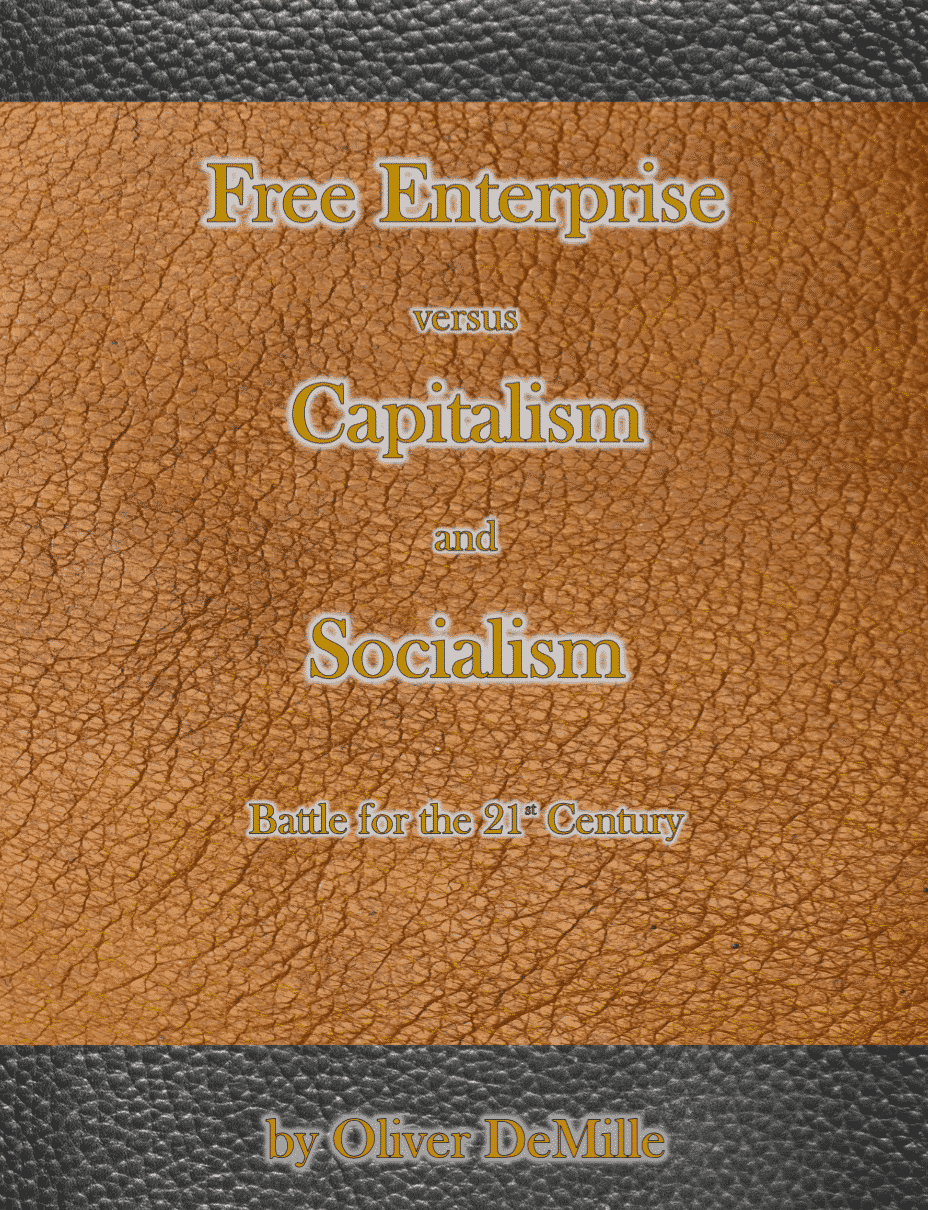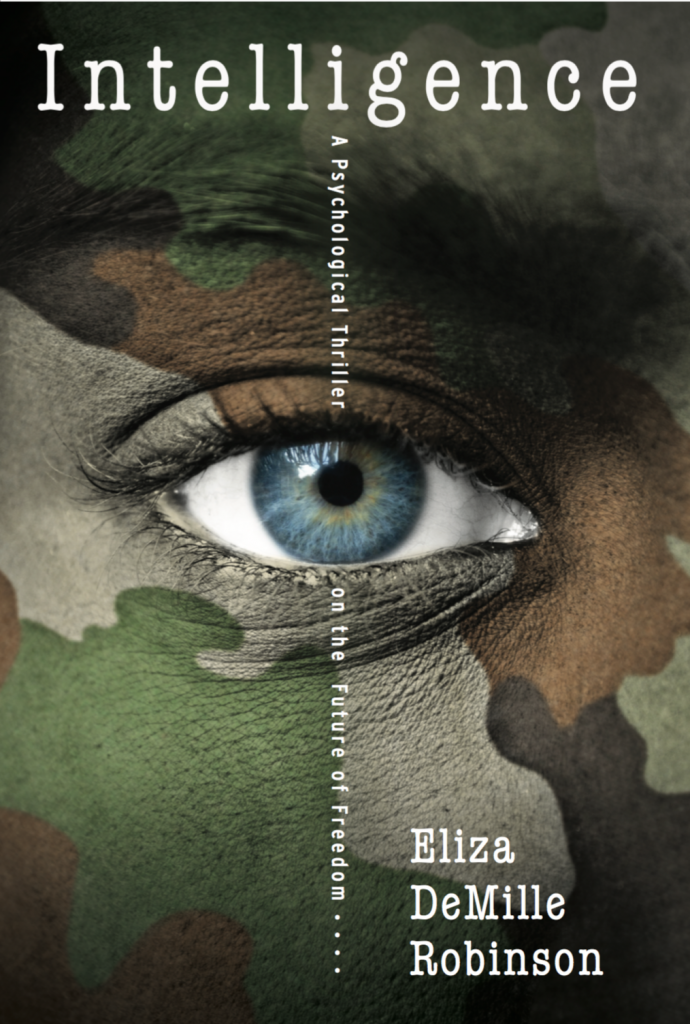THE JEFFERSON-MADISON DEBATES: A New Cold War is Coming – PART I
June 3rd, 2019 // 6:14 pm @ Oliver DeMille
The 3 Superpowers and The State of the World Right Now
(WHAT EVERY AMERICAN SHOULD KNOW)
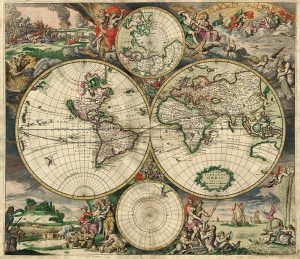
America isn’t supposed to act this way, the experts say. After all, we invented the liberal international order—the growing sprawl of international organizations, treaties, and laws that all nations are eventually supposed to join, and follow.
Founded in 1917, 1921, 1944 and almost every year since, Internationalism, now usually called Globalism, is America’s biggest export. More than freedom. More than apple pie. More than movies, even. But this whole arrangement has been turned on its head in the era of Brexit and Trump.
I: The United States
The two most powerful enemies of Globalism, Russia and China, once had a clear path to success—to slow down the growth of Globalism, slow down America and it’s NATO allies, and thereby increase their own status. For that matter, between 1944 and 2017, most U.S. policy makers had the same approach: spread U.S. influence by supporting the expansion of Globalism. Globalism itself was built on three main pillars:
- An “acronym salad” of international organizations (from the UN to the IBRD [World Bank] and IMF, from the World Court, the G7 and G8, to the GATT and eventually the World Trade Organization, etc.)
- Free trade agreements
- Collective security arrangements
By the 1980s, Internationalism dominated the U.S. government and universities; anything that differed from the aims of Internationalism was decried by experts as dangerous isolationism. When I was in college, for example, and wanted to study Political Science, multiple professors assured me that “Political Science is outdated; study International Relations–that’s the future.” The U.S. State Department and a host of foreign policy professionals in our universities convinced three generations (1964-2016) that Internationalism [and later Globalism] equals freedom, and that the U.S. is just one part of Globalism (along with a bunch of other nations)–not its indispensable leader.
This all changed with the advent of Brexit, followed by the surprising (to the “mainstream thinking”) election of Donald Trump.
According to one expert:
“Although future presidents will try to restore the classical version of U.S. foreign policy [Globalism], in all likelihood, it cannot be returned.”
(Foreign Affairs, May/June 2019, p. 10)
Why? Because President Trump is patently against free trade agreements that are built on Globalism rather than economic benefits for Americans, and against international organizations that sap American power and resources without giving back commensurate benefits to American citizens.
For the foreign policy establishment, this is heresy. After more than 70 years of trying to convince world leaders to join Globalism, Trump’s rejection of the Globalist system will probably make it impossible for heads of state to trust future U.S. assurances of Globalism. After all, as 2016 proved, a single election can significantly reverse, and even erase, seven decades of U.S. policy. This is what the American Framers intended, but it is anathema to the current foreign policy establishment.
As another article in the same issue of Foreign Affairs put it: “Can the State Department be Saved?” Short answer: No. The State Department is based on Globalism, and Globalism can be rejected by the American people in any given presidential election. The world is changed. Forever. The main reason given for this shift is interesting: the American people don’t trust “experts” anymore. (Foreign Affairs, May/June 2019, p. 14).
A secondary reason is that foreign policy experts worked very hard (from 1944 to 2016) to transfer increasing levels of power to the office of the Presidency, shifting it slowly over time from the Legislative Branch. (See ibid.) Turns out changing the Constitution in this backroom fashion has unintended consequences for the progressives who championed it.
II: Russia and China
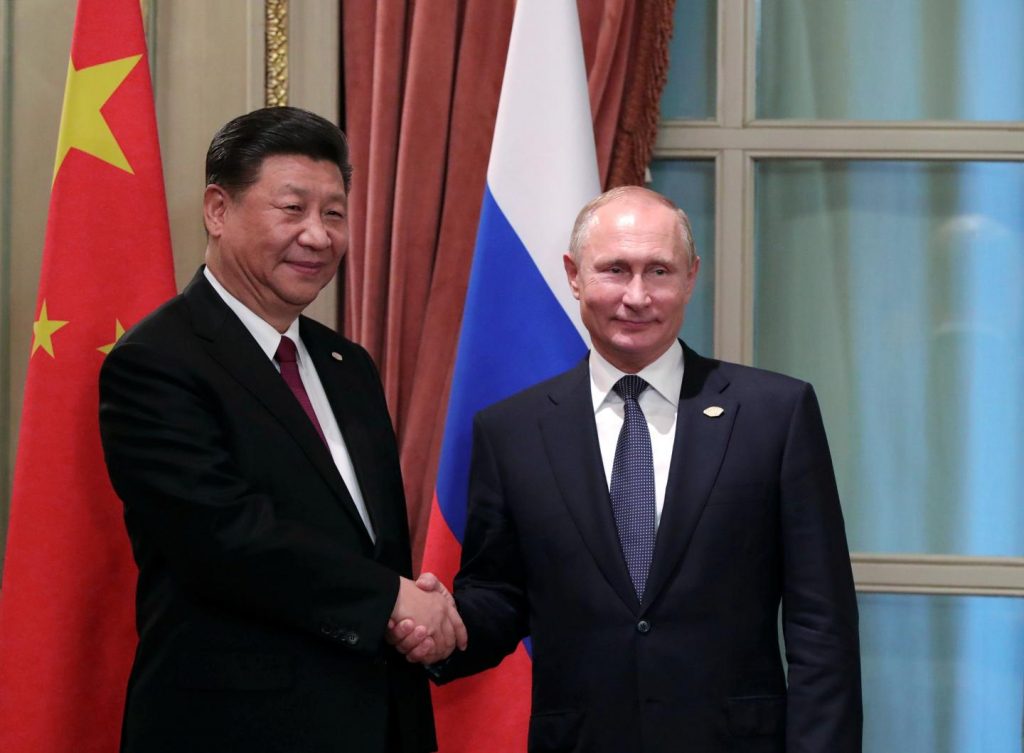
This drastic change is a shock for both Russia and China. Putin built his administration as the biggest outlier and opponent of Globalism, with a “Russia First” approach. [Richard Sakwa, 2019, Russia’s Futures]
As one Russia expert put it, Putin’s main goal for two decades has been to “Make Russia Great Again.” (Ibid.) The focus of this agenda was to keep Russia strongly in control of its own future by resisting Globalism as an ideology and Globalist international organizations in specific. Putin accomplished this by resisting the West at every turn, but simultaneously allowing Globalism to grow so that Western economies could continue to purchase Russian oil and other products.
Thus Trump and Putin agree on a general policy: “My Nation First”. But they are directly adversarial, because one wants to put the U.S. above the Liberal International Order and the other seeks to put Russia above Globalism and Globalist institutions. Same goal—opposite direction.
The two presidents have also employed very different means to achieve their goals. Trump’s main strategy has been to deregulate the U.S. economy, allowing increased economic freedom to reboot finance, commerce, entrepreneurship, and production; Putin’s major agenda has been a massive centralization of power to the office of President, i.e. himself. Putin has, in twenty years of power, created another Russian autocracy, with centralized powers that some experts say rival, or perhaps exceed, those of Stalin.
China is also drastically centralizing power to President Xi, to the point that a number of China experts consider this a return to Mao-level dominance by one leader. But unlike Russia, China worked hard from 1989-2017 to increase its influence as part of the Globalist community. It even supported, at least superficially, a level of U.S. leadership in international organizations—always with the understanding that the U.S. could lead as long as it also paid most of the bill.
The State Department largely saw this as a positive, and promised/fulfilled payments from U.S. taxpayers to numerous programs worldwide. At the same time, China frequently voted for these programs at the international level (again, as long as the U.S. was picking up the tab) and spent its own time and money buying up control of world natural resources in Asia, Africa, and Latin America. China now manages (by contract) more natural resources around the world than any other nation–far more than the United States. Ironically, communistic China preferred capitalist-style business contracts around the globe for water, food, oil, land and other natural resources, while U.S. claims to the same were usually negotiated by treaty and backed by arms rather than contract.
Today China, Russia and the United States are pulling away from each other, and all three are simultaneously pulling away from international organizations and the liberal Globalist Order. The future name of our era will likely be something like “The Return of Rivalry” (Foreign Affairs, May/June 2019, p. 19) or a “New Cold War” (Op cit., Sakwa, 2019). As Richard Sakwa put it: “Russia and the Atlantic System [NATO plus…] are locked in confrontation.” Add China to the mix, and a new Age of Rivalry is here.
Further details are sobering. For example, unlike the situation during the original Cold War, there are numerous conflicting rivalries at play right now, including:
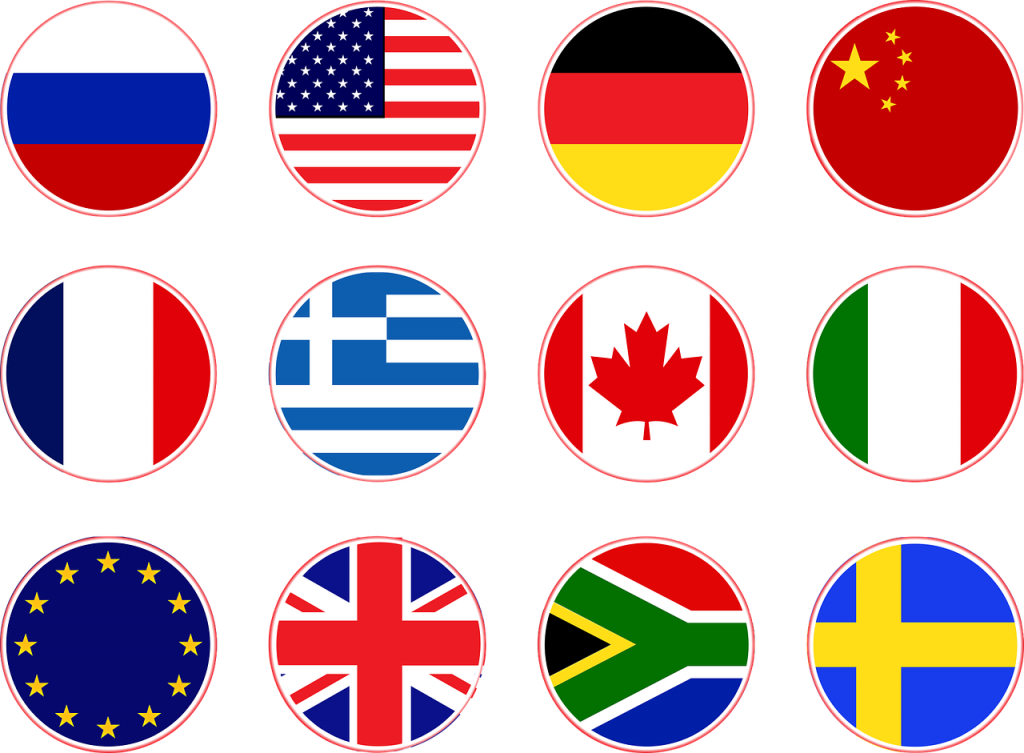
- U.S./Russia – U.S./China
- Russia/China
- U.S./European Union
- China/European Union
- Russia/European Union
- United Kingdom/European Union
- Trump Administration/U.S. Foreign Policy Establishment (or, on the broader scale, Red/Blue culture)
- U.S./North Korea (China proxy)
- China/Taiwan (U.S. proxy)
- U.S./Iran (Russia proxy)
- U.S./Cuba (Russia proxy)
- U.S./Nicaragua (Russia proxy)
- U.S./any nation with natural resources contracted to China
- Russia/any nation with natural resources contracted to China
- European Union/any nation with natural resources contracted to China
- Iran (Russia proxy)/Israel (U.S. proxy)
- Syria (Russia proxy)/Israel (U.S. proxy)
Serious flashpoints ahead. Proxies can, of course, cause major problems between superpowers, for example the Korean War and Vietnam War, not to mention the proxy-conflict that sparked World War I. Also, unlike the Red-Blue division in the United States that seems poised to create increased internal conflict in the years ahead, both China and Russia have consolidated powers, and the leading groups of influence within their respective nations are currently, and strongly, behind Xi and Putin. This solidarity is particularly surprising in Russia, where the four major power groups seldom agree on much, but right now concur that Russia should be less acquiescent to the United States and the West: “All four of the great interest-ideological blocs broadly support Putin…and indeed, the main criticism of three of them is that he has been too weak and accommodating to the West’s demands.” (Op. cit., Sakwa, 2019)
III: Dangers Ahead
If (when) any of the rivalries listed above escalates, each superpower will ultimately tend to fall back on its areas of strategic advantage. Every American should understand these advantages, for all three superpowers.
China: The Chinese strategic advantages are access to natural resources, manpower for traditional military conflict, and a tightly centralized command structure. Note that the latter isn’t an advantage for freedom, but during conflicts it is a distinct strategic benefit. China is built for outlasting the enemy, holding on and waiting for opponents to tire out, burn out, or give in. Anyone engaging a major conflict with China needs to be prepared for the long haul—and plan in terms of multiple decades rather than years.
United States: If the conflict is dominated by economics, a non-regulation-oriented Administration paired with an enterprising U.S. culture is a serious short-, medium-, and long-term advantage. (A high-regulation Administration would cancel this advantage.) In a major conflict, incentivizing the entrepreneurialism of the populace will be the major key to American victory, or even stalemate.
Russia: If the battle turns violent, Russia will be tempted to rely on the advantage of its nuclear arsenal. Indeed, in today’s New Cold War, Russia finds itself facing a very different situation than during the 1950s-1980s. At least four significant differences could change everything:
- Russia today doesn’t have the allies the USSR had. (Op. cit., Sakwa, 2019)
- China is a third superpower, complicating the whole situation, especially since it is geographically adjacent and shares the world’s largest militarized border with China. (Ibid.)
- U.S. deregulation of domestic oil production since 2016, and other contemporary increases in oil production around the world have reduced petroleum as the major income stream it once was for the USSR/Russia. (See ibid.)
- Cyber weapons are a new reality, something both China and Russia are endeavoring to master. (See ibid.)
These four shifts in geopolitics strongly increase Russia’s dependence on nuclear weapons as its main, if not only, strategic advantage. This is dangerous. And this rivalry is just heating up.
Conclusion

For the United States, the greatest danger probably won’t come from lack of resources or a nuclear attack—both can be effectively deterred by strong and unified leadership—but rather by the growing chasm between Red and Blue culture.
The worst-case scenario for U.S. national security in the Twenty-First Century may well be a pattern of yo-yo elections (Op cit, Foreign Affairs, 2019), four years Red followed by four years Blue in the Oval Office, repeating again and again. Four years isn’t enough to truly reboot the economy and military (Red agenda), or restructure the economy on more collectivist and regulatory lines to increase social equality (Blue agenda). To build one agenda for four years, then tear it down for four years, over and over, will almost certainly guarantee American weakness and long-term economic/security decline. An eight-year cycle would be less extreme, but still bad. This yo-yo pattern is also, unfortunately, the most likely scenario given current trends in America. (Ibid.)
Great superpowers are seldom conquered from without. Instead, they fight internally, causing their own decline from within. This is precisely what we are witnessing right now. The election of 2020, and even more tellingly the election of 2024, will signal which of the following paths we are pursuing:
- A U.S./China dominated world in the year 2040, or,
- A Russia/China dominated world in the year 2040
Americans must take action to effectively protect American freedoms and superpower leadership in an increasingly dangerous world.
What we as citizens can actually do, and how to do it, will be addressed in Part II of this Special Report, to be published next week.
Recommended Reading:
- Russia’s Futures, Richard Sakwa, 2019.
- The Shanghai Free Taxi, Frank Langfitt, 2019.
- Foreign Affairs, May/June 2019
- The Third Revolution: Xi Jinping and the New Chinese State, Elizabeth C. Economy, 2018.
- The Tragedy of Property: Private Life, Ownership and the Russian State, Maxim Trudolyubov, 2018.
Category : Blog &Citizenship &Community &Constitution &Culture &Current Events &Economics &Featured &Foreign Affairs &Generations &Government &History &Information Age &Leadership &Liberty &Politics &Statesmanship
In the News: The Biden Bump?
May 22nd, 2019 // 12:07 pm @ Oliver DeMille
The Biden Bump?
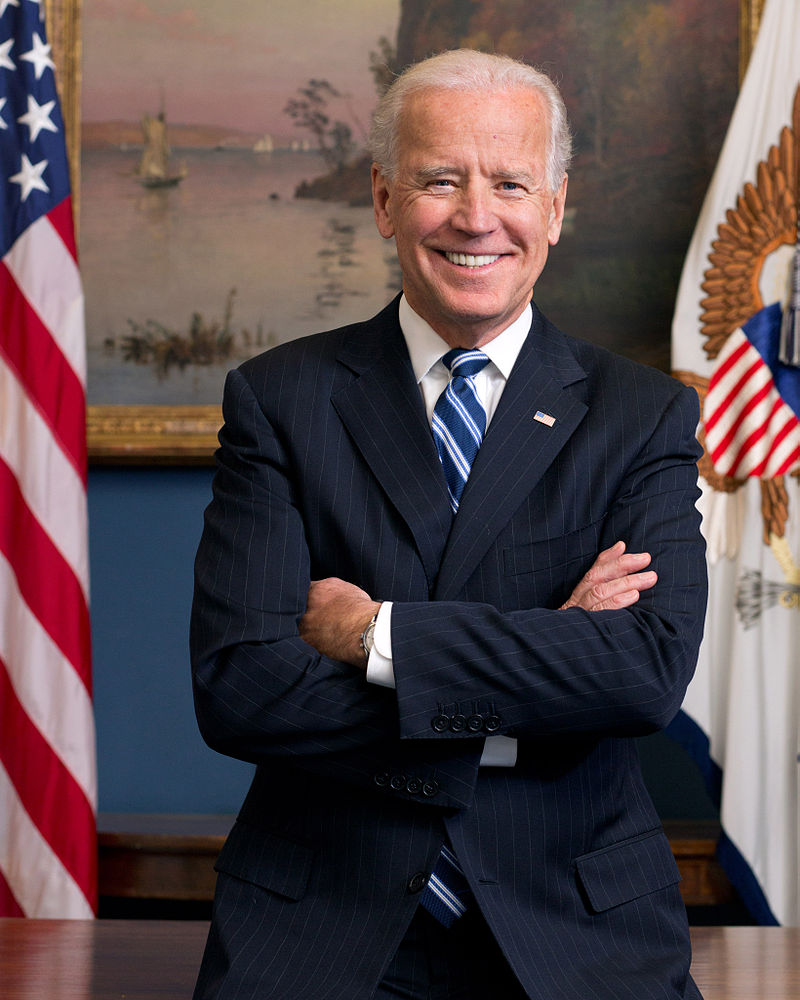
Why is Joe Biden so far ahead in the early Democratic polls? A lot of Republicans, Democrats, and others aren’t sure what gives Biden such a significant lead.
The answer is that he’s the only “real” candidate right now. What does “real” candidate mean?
Will the “real” candidates please step up
First, it requires major name recognition, especially this early in the election. Biden, as president Obama’s vice president, clearly leads the pack in this category. Second, “real” candidate also means someone who leans to the middle. This is even more significant than name recognition.
In U.S. presidential politics, a lot of people always (or almost always) vote Republican, and a lot of others always (or nearly always) vote Democrat. The voters in swing states–those who sometimes vote Democrat and other times Republican–ultimately determine who wins. Such voters are less connected or loyal to either political party, and more interested in non-party factors and issues when they vote. Since they sometimes vote one way, and other times change sides, they seldom vote for candidates who are arch-conservative or far-left. They never choose an extreme candidate, from either party. (Trump was extreme in behavior, but leaned middle in his politics; indeed, far-right candidates like Rand Paul and Ted Cruz frequently questioned whether Trump is even a conservative.)
Looking Back
In the 2016 election, the final decision came down to voters in Wisconsin, Michigan, Pennsylvania and Ohio. Such voters, mostly from the working class, are not impressed with socialist and other far-left issues, like:
- The Green New Deal (kills jobs–the very kinds of jobs that are widespread in these states)
- Extreme environmentalist policies
- UBI (a universal basic income)
- Major tax increases
- One-payer socialized medicine for everyone in America
- Extreme gun control
- Third trimester/late-term abortion
- Racial reparations
- Abolishing the electoral college (which would allow California, New York, Illinois, Texas, and Florida to determine every presidential election without input from or regard for other 45 states)
The more of these a candidate supports, the more he/she leans left. The fewer of these things a candidate supports, the more he/she leans to the middle. Biden sometimes expresses support for a few of these, in a lukewarm way, but he isn’t consistently adamant or passionate about any of them.
In the current field of Democrat candidates, Biden is the only one with major name recognition who doesn’t lean strongly to the liberal left. Indeed, the only other Democratic candidate with truly household national name recognition is Bernie Sanders, who leans so far left that for many Americans his name is synonymous with “socialism”.
Beyond the first tier of name recognition, filled right now only by Biden and Bernie, the second tier of candidates are known to people who regularly read or watch the news, but are still largely unknown to most Americans. Currently the second tier includes Elizabeth Warren, Kamala Harris, Cory Booker, Bill de Blasio, Beto O’Rourke, and Pete Buttigieg. Kirsten Gillibrand, Stacy Abrahms, Tim Ryan, Julian Castro, and John Hickenlooper are also known to many who closely follow politics.
Left-leaning
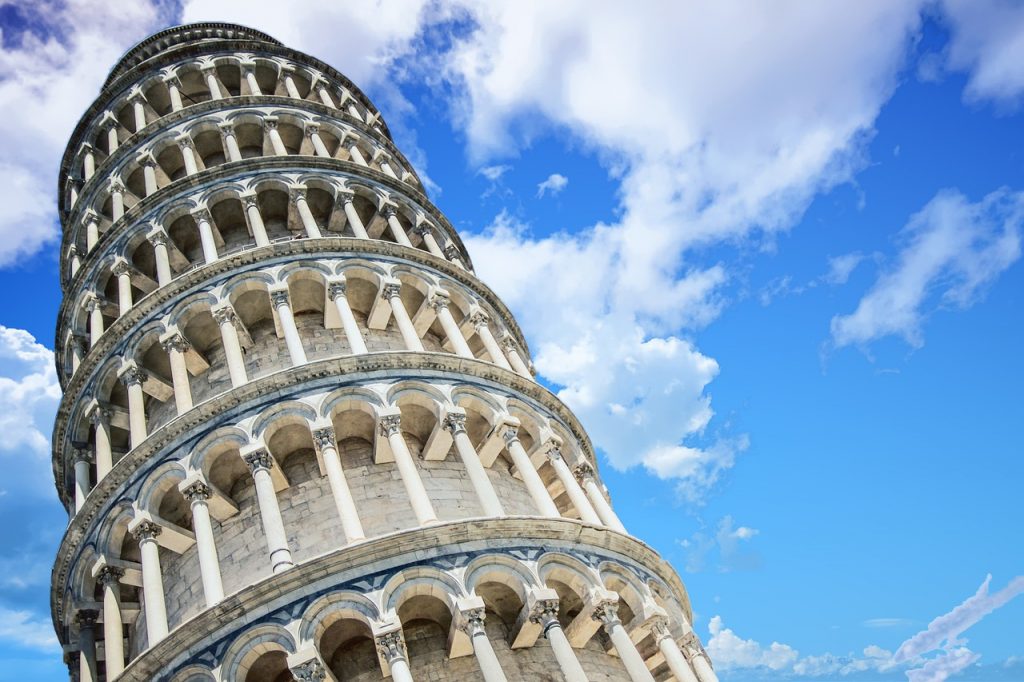
Reality: all of these lean much further left than Biden. All of them. The only middle-leaning candidate other than Biden is Amy Klobuchar, the Minnesota senator with almost no name recognition; the likelihood of her catching Biden and taking his place as the middle-leaning candidate is remote. Plus, Klobuchar has made statehood for Washington DC her major issue. Really? Name one other state that actually likes Washington DC and wants to give it more power.
A couple of entrepreneurs/authors, Marianne Williamson and Andrew Yang, have also thrown their hats into the ring. While many readers love their writings (myself included–both have books on my “favorites” list), they have entered the race promising support of far-left polices such as racial reparations (Williamson) and UBI (Yang). Again, Biden leans much closer to the middle than all these opponents.
The name-recognition part of the race will eventually fade away. When the last two or three candidates remain, the national media will make celebrities of them all. But the issue of leaning center versus leaning far left will remain. If nobody can fill that “lean-middle” spot, Biden will have the best chance of beating Trump in the general election, and he will likely be the nominee.
In 2016, internal rules of the Democratic Party kept Bernie from becoming the nominee, despite his appeal to lots of swing voters. Democrats have taken steps to change this; whether or not it works remains to be seen. Bernie appealed to a lot of new voters, including youth, who showed little interest in the general election once Bernie was eliminated. Trump won by appealing to millions of new voters as well, especially in the Rust Belt swing states, many of whom hadn’t voted for a Republican in recent elections. Biden, though he leans more middle than other Democrats currently in the race, probably won’t bring in significant blocs of new voters–unless he can effectively draw in a lot of Hate-Trump youth. This task would be much more natural for someone like Beto O’Rourke or Bernie Sanders; but these two also drive away many voters in the swing-state middle.
Place Your Bets
It’s too early to tell what will actually happen, but it’s hard to imagine much excitement or energy surging around the gaffe-prone “aw-shucks” approach of Joe Biden. The Democratic Party has done well when it introduced inspiring, young, high-energy candidates like John F. Kennedy, Jimmy Carter, Bill Clinton, and Barack Obama–not old-timer Washington insiders like Walter Mondale, Al Gore, Michael Dukakis, John Kerry, or Hillary Clinton. All of those on the first list won the White House; everyone on the second lost. Joe Biden clearly fits on the second list, and wouldn’t stand a chance running against anyone on the first list. Prediction: no Biden Bump ahead.
Do any of the current Democratic candidates fit on that first list? Short answer: Beto, Kamala, Pete. But they all push far left of Joe Biden. So far.
Note: A good place to read more about all the current Democratic candidates and their stance on issues, from a liberal perspective, which, of cours,e is the only perspective that matters in the Democratic Primary vote: “The Rolling Stone Politics 2020 Democratic Primary Leaderboard“.
Category : Blog &Culture &Current Events &Government &History &Independents &Leadership &Politics
Let’s talk presidential election 2020
May 8th, 2019 // 6:30 am @ Oliver DeMille
News of the Day

May 2019:
Let’s talk politics briefly–specifically the 2020 U.S. presidential election. Who is the leading candidate for the Democrats? According to the polls, it’s Joe Biden. But it’s way too early for the polls to get things right, and even if the polls could make an accurate prediction right now, the real answer to this question (“Who is the leading candidate?”) goes much deeper than polls, or even who’s running for office.
The real question, as political insiders understand, is this: “Who is the greatest threat to each party’s candidate?” The answers are significant. In the case of Democrats, the major threat is Donald Trump. This is always true of incumbent presidents, so no surprise here. But in the case of who looms as the biggest threat to president Trump in 2020, the answer is a bit surprising for most people, and certainly for anyone who gets their news from the mainstream media. Again, for insiders the answer is clear. But what is it?
Trump vs. ???
Does Trump’s major threat come from Joe Biden? Or Bernie Sanders? What about Kamala Harris, or Cory Booker, or any other Democrat senator, governor, mayor, representative or billionaire running for office? Or perhaps a serious run by Michele Obama, if she makes the unlikely choice to seek the Oval Office?
Answer: None of these. In fact, Trump’s major threat for the 2020 election comes from a former short-time member of George H.W. Bush’s administration in 1992. As mentioned, this is a surprise. But real. The big threat to Trump winning the election is Jerome Powell. For most Americans, the immediate response is “Jerome who…?”
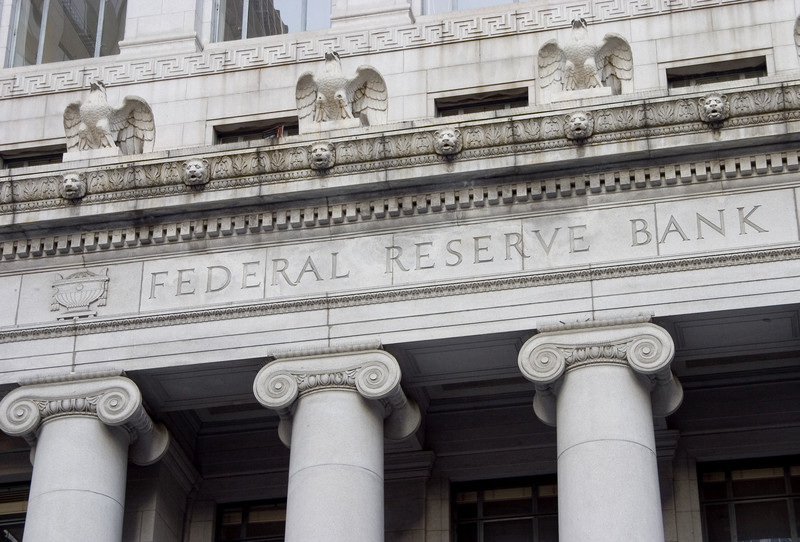
Powell is the chair of the Federal Reserve, and Fed decisions between now and election day 2020 can almost single-handedly determine whether Donald Trump ends up serving one or two terms. How? Answer: As Bill Clinton advisor James Carville once quipped, “It’s the economy, stupid.”
It’s the Economy, Stupid
The 2016 election pitted strongly-blue states against firmly-red states, but came down to Republican wins in the Rust Belt: Pennsylvania, Michigan, Wisconsin, Indiana, Ohio, and West Virginia. Today these states are experiencing precisely what they voted for in 2016: a booming economy and rising wages, most notably among middle class working voters. If this continues, or even holds steady at current levels (barring major catastrophe of some kind), 2020 is likely a “shoo-in” for Trump/Pence.
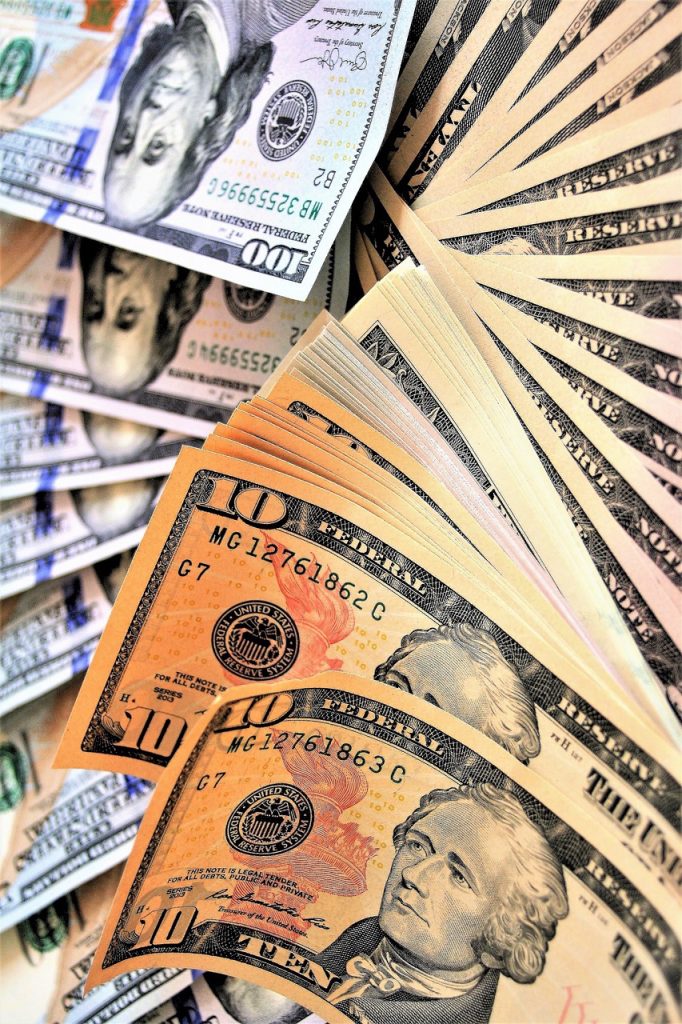
If the boom stagnates, or returns to economic decline and “slow growth or no growth as the new normal,” as experienced from 2008-2016, the eventual Democratic nominee will likely sweep the Rust Belt and many-if-not-most of the Purple swing states. That’s the game.
The most significant factors determining economic upswing or downturn, now that the current Administration has drastically reduced the regulatory red tape that hampered business growth during the Bush and Trump eras, are the choices made at the sole discretion of the Federal Reserve. Jerome Powell, not the political parties and not even the media, potentially (if the Fed chooses to put its thumb on the scale) holds the future in his hands.
The Constitutional Question
For me, the real issue here is the following question: “What would the American Framers and Founders say about this arrangement?” Probably the same thing most Americans should be thinking about a lot more:
Why does an institution not even mentioned in the Constitution, and facing only one minor Constitutional balance and no serious Constitutional checks from any of the three branches of the U.S. Government, have this kind of power?
Whatever your politics, why does one organization and its head, virtually unknown to the large majority of Americans, control our future? This is THE question of the 2020 election, but so far I haven’t heard it voiced anywhere.
Category : Blog &Citizenship &Community &Constitution &Current Events &Economics &Featured &Generations &Government &History &Independents &Information Age &Leadership &Liberty &Politics &Prosperity &Statesmanship
TODAY IN THE NEWS by Oliver DeMille
May 6th, 2019 // 6:44 am @ Oliver DeMille

I. Today in the News
There is so much going on in the news these days–big events that have major potential to influence the future of our nation and freedom. Unfortunately, almost all the news is reported with strong partisan leanings. The slant and spin are frequently overwhelming.
To respond, I’ve decided to do a several-times-a-week news post that steps away from current partisan spin and addresses the big news of the day from the perspective of the U.S. Constitution and the viewpoint of the American Founding. It will give readers a different way to look at things several times a week. I’ll try to keep these brief and to the point, just a few paragraphs per post. I hope you will comment and share so this can influence people…
Here’s the first post:

Friday, May 9, 2109
The Democrat-led investigative committees of the House of Representatives are threatening to force the Attorney General of the United States and other Administration officials to testify, even to the point of contempt charges and sending the House Sergeant of Arms to arrest and detain them until they comply. Many Democrats (and left-leaning mainstream media) claim they have this power (though it hasn’t been used in nearly 80 years), while most Republicans argue that this would violate the Constitution with the Legislative Branch usurping duties held by both the Executive and Judiciary. Founding Father St. George Tucker wrote about this same threat in 1803 and outlined 6 specific ways this action would violate the Constitution; his list sides with the 2019 Republican view (The Founders’ Constitution, vol. 2, pp. 311-313.) So–no surprise–there’s a partisan split on the topic.
But let’s look at this from a third perspective. Speaking ironically: wouldn’t it be great if the House did it and made it stick?
Before you answer…think about it. On the one hand, the Democrats are wrong about this on Constitutional grounds, so that would be bad. And in an ideal world, that should be the end of the discussion.
But on the other hand (again, speaking ironically), wouldn’t it be nice to see the House of Representatives actually do something to check another branch of government? This is hugely important.
The Framers gave the House the biggest check of all–the power over the purse strings, meaning control of all money spent by the federal government–because the House members are the federal officials most easily removed and replaced by the voters. The Framers wanted the people, the voting public, to have the biggest voice in the federal government, and the only direct voice they gave the people was through the House.
But the House hasn’t used its purse strings to check the Court or the Executive Branch in big, meaningful ways for many decades. Executive Agencies and the Courts have gotten away with numerous unconstitutional actions because the House has been weak. Indeed, where the Framers wanted the House to have the most power of all the entities in the federal government, today the House is the weakest.
Not good.
To the current threat of the House apprehending and jailing uncooperative government officials: If the House followed through on this threat, it would create a precedent that the House can arrest and jail members of the other branches who aren’t obeying the law. Not the ideal system of checks and balances, to say the least; but might it actually be better than the House (and the people) having basically no power at all over the other two branches?
If we’re going to violate the Constitution routinely, this violation would at least be a path that gives more power to the people. Right now, given current news of the day, this seems bad to conservatives; but they would have loved it when Eric Holder ran “Fast and Furious” and the House could just arrest and jail him.
Yes, this sounds a bit wild; but given the current lack of House power, you could make a case that this is a step in the right direction.
Yeah, of course
Ideally the House would just fulfill its Constitutionally-defined duties and use finances to check the Executive and Judiciary. If the House isn’t going to follow the Constitution, and the voters aren’t either, then is allowing the House to have some little power to check the other two branches a lesser evil?
What do you think? Whatever you decide, this kind of considering each branch’s options is exactly the way the Founding generation would have thought about it. Today, far too often, Americans simply accept whatever the media, party leaders, or experts say, without thinking about the issue from all angles like the regular citizens did in early America.
Which is worse: a House that has no power versus the Executive Agencies and Courts (allowing them to run rampant), or a House that can arrest government officials who are violating the Constitution? Sometimes the House would get it wrong, but the alternative is that the Executive Agencies and Courts act with almost unlimited power and impunity.
Where do you stand on this?
Please comment and share….
II. Free Enterprise is Better than Socialism or Capitalism
“It is no crime to be ignorant of economics, which is, after all, a specialized discipline and one that most people consider to be a ‘dismal science.’
But it is totally irresponsible to have a loud and vociferous opinion on economic subjects while remaining in this state of ignorance.”
—Murray Rothbard
THERE is a battle raging for the future of America. And, by extension, this battle impacts the prospects for freedom around the world. Indeed, if the great system of freedom initiated by the Declaration of Independence and established by the U.S. Constitution is lost in the United States, it will likely take centuries before real freedom regains its current levels of influence in the world.
This is the great struggle of our generation, but sadly the center point of this contest is unclear to most people. Only a relative few understand what is actually going on behind the scenes.
In fact, this battle for our future hinges on two main questions.
The first question is:
Will Socialism or Free Enterprise be the leading economic system of the 21st Century?
Category : Aristocracy &Blog &Citizenship &Community &Constitution &Culture &Current Events &Economics &Generations &Government &History &Information Age &Leadership &Liberty &Politics &Statesmanship
Don’t Miss This Book!
April 15th, 2019 // 9:44 am @ Oliver DeMille
A Note from Oliver DeMille…
Summer – 1985 or 1986: I couldn’t believe it. I found myself holding my breath. Hanging on every word, page after page, waiting to see if freedom would be lost forever… Could they fix it? Or was it too far gone? And how could they get back their freedoms if they waited any longer?

I was a teenager at the time, and I had no idea that I would eventually dedicate much of my adult life to studying and promoting freedom, and the great principles upon which freedom is based.
But I don’t think I would have become a serious student or promoter of freedom without reading two books – both of which made me fall head-over-heels in love with freedom, and inserted deeply into my heart and mind why it matters.
The two books were The Alliance by Gerald Lund and The Making of America by [the man who later became my personal mentor] Cleon Skousen, and they changed my life. I truly came to love freedom as I read them during one hot summer in the family home where I grew up.
The Battle for our Youth
Today I look around at the rising generation – over 50% of whom (in the United States) say they like socialism. I look at the lack of interest in freedom among so many young people, and I worry about the future. After all the blood and tears that the Founders, pioneers and so many soldiers paid for our freedoms, why can’t everyone see how important this is? We can’t remain free if the youth don’t care about it, or if they think socialism is a better path. But just caring about freedom isn’t enough. We need the younger generation to truly fall in love with freedom.
Nothing else will prepare them to be the kind of people who stand up for freedom and right and make sure it isn’t lost.
I’m writing today to highly recommend a new book that I believe will have the same kind of impact on those who read it – inspiring them to fall deeply in love with freedom. Or, if they already care about freedom, as many do, to love and cherish it even more.
The book is Intelligence, written by Eliza DeMille Robinson, my daughter and mentee during over 20 years of personalized homeschool mentoring.
This is a dystopian novel, with real answers for the real world – plus a bit of an epic on the future of freedom, and a truly excellent read. I smile as I review it, seeing the years of study in history, leadership, freedom, government, literature, classics, science and other books with discussions!
I see all that she discovered – we discovered together – now poured into the plot and characters. The book depicts a near-future world torn apart by the battle between freedom and socialism, and paints a realistic and challenging picture of where we may be heading in our modern society if the conveyor-belt system of education keeps expanding at its current pace!
It speaks directly to people today, both those in the rising generations and their parents. It is a powerful message for this time, our specific time, in history.
TJEd is proud to promote this important new book, because we consider Intelligence a must-read for anyone who loves freedom, great education, and sees the increase in value and need for Leadership Education in our world today.
Eliza has been writing and rewriting this book for five years, and I have watched it develop from a good idea into a solid story by a student, then into an excellent book in its own right–and, during the last year, into a truly great book with an important message for everyone in our current generation.
It’s exciting to now see it published. I think this book is especially powerful for today’s youth, to help them value freedom, love learning at an even deeper level, and actually fall in love with freedom–something that is increasingly and tragically rare in the rising generation.
This is a great book, a life-changing book! We are proud to promote it to everyone who cares about the direction modern education is too often taking many families and our world, and all who care about the freedoms that are being lost almost daily.
Don’t miss this great book – for youth, for parents, and the whole family. The time for such a story is now, while we can still make a difference for freedom.
Prepare to be inspired…
January 2019: I realize that once again I’m holding my breath, caught up in the intensity of the story. This feels just like it did back then. I inhale deeply as I turn the page; then as I read about dear Brianna’s decision, the tears come. Then the sobs; my mind is reeling. I keep thinking: freedom is worth it. So worth it. I wipe away the tears and keep reading…

What are readers saying?
“A dystopian novel worthy of sitting beside titles like The Hunger Games and The Giver, Intelligence tells a story that is crucial to our rising generation. Excellent for teens and adults, its deep and plentiful messages remind readers about the impact of our current decisions on our future, providing hours of discussion time after just a single chapter!”
~Jonathan D. Martin, 14yo TJEd High student
“I’m a huge fan of dystopian fiction. Intelligence goes even a step above and beyond what we have read in current fiction. It not only has an original and intriguing plot, but it illustrates true principles to keep our country free. This is must read for my teens! Robinson is a captivating author. I look forward to reading much more of her work!”
~Toni Nelson
“Deeply thought provoking, couldn’t put it down, then couldn’t wait to discuss it with friends and family! So much here: what a personal life mission looks like, how it is discovered; the basic premise of freedom on all levels from national/governmental to individual/personal; sacrifice and what is worth the sacrifice; what is good, what is evil and what determines that all wrapped up in a captivating, moving storyline. ”
~Sarah Teichert
“More than anything, Intelligence, By Eliza DeMille Robinson, whet my palate for more! In this first book, you get a thrilling journey through the souls of unique and interesting individuals as they discover what is worth fighting and sacrificing for. The individual, the collective, the very state of the world hangs in the balance as the dedicated few battle for freedom, truth, and all that is right and worthy in the world. It’s a bit dystopian, a bit sci-fi, a bit coming of age, a bit a hero’s tale, a bit treatise on the future of the human race! The world Eliza builds will all ring a bit disturbingly true and you’ll come to take a moment to search your soul as the characters search theirs and find their true calling and power as individuals.”
~Lisa Paul
Excellent for gifting, book clubs, and family discussion! Purchase your copies today!
Category : Blog &Book Reviews &Culture &Education &Featured &Government &History &Leadership &Liberty &Mission &Politics &Statesmanship

